 Angered by the death of his family, Rockatansky becomes a vigilante. Photo: Orion Pictures
Angered by the death of his family, Rockatansky becomes a vigilante. Photo: Orion Pictures
“This crazy circus is there, I’m starting to enjoy it… A little more there, on this road, and I’m one of them, you know? The terminal is crazy. These are the words of Max Rockatansky, played by Mel Gibson, in the first Mad Max film. He is not yet a mythical, vengeance-seeking road warrior in apocalyptic Australia, but a baby-faced policeman and family man who is on a collision course with a gang of killer bikers.
Max subsequently finds himself surviving the fall of civilization in the Australian wastelands , where tribes of marauders fight over the most valuable substance on earth: “guzzolin” (or “petrol”, as we pre-apocalypse Brits called it).
Max's words — «This crazy circus, I'm starting to enjoy it» — reflect the ongoing, ever-accelerating pleasures of the Mad Max series, which intensifies the vehicular carnage with each installment. Following on from 2015's Mad Max: Fury Road—essentially a two-hour chase in which Tom Hardy took on the role of Max—the latest version, Furiosa: The Mad Max Saga, is now out. Max himself is absent, although creator and original director George Miller is still actively behind the wheel.
The original Mad Max, released in 1979, launched Mel Gibson on the path to stardom and was once listed in the Guinness Book of World Records as the highest-grossing film of all time. It was produced for less than $400,000 (in Australia) and earned $100 million (US) worldwide. This was also done in the spirit of the turbocharged lawlessness depicted on the screen. “It was a battle on all fronts,” says Terry Hayes, who wrote the first two sequels. The cars crashed into each other for real; filmmakers hijacked freeways; and – at one point – the operator was strapped to a motorcycle traveling at over 100 mph.
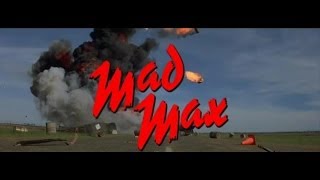
Max Rockatansky would not put up with their shenanigans. In the story, he is a Master Patrolman — or «Bronze», named after his bronze police badge — whose job is to chase down the evil but crazy Road Pigs.
The original idea came from real-life road carnage. George Miller lost teenage friends in road accidents. He later worked as an emergency room doctor and was disturbed by how matter-of-factly the horrific injuries caused by road traffic accidents were handled. The massacre was normalized. “In Australia we have a car culture, just like the Americans have a gun culture,” he later said. “The cult of the car. Violence by car.» Miller's filmmaking partner Byron Kennedy — co-writer and producer of the first two Mad Max films — recalls that a total of 23 people died on Australian roads over one weekend in 1975.
Underneath this lies base pleasure. Mad Max hood too. “On the other hand, I just love action movies,” George Miller said in 2015. “For me, the most universal language and the purest syntax of cinema is action films.”
The film was co-written by James McCausland, a journalist with no experience writing films, just one example of how Mad Max ended up being finished. Miller felt that their story idea was «too exaggerated» for the real world, but their meager budget, raised through a consortium of friends, family, and investors, prevented them from creating a full-fledged futuristic setting. Instead, the first Mad Max takes place «a few years in the future»: a soon-to-be reality where seemingly endless, deserted highways connect dilapidated cities. Ordinary suburban houses stand out in the background, hiding the not-quite-dystopian landscape.
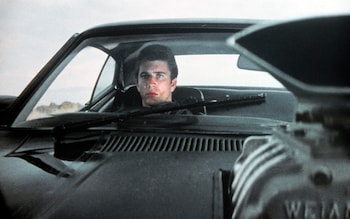 Mel Gibson in Mad Max Photo credit: Alamy
Mel Gibson in Mad Max Photo credit: Alamy
The most futuristic thing about the original Mad Max is the complete leather uniforms worn by police officers that were actually made from vinyl because the budget wouldn't have accommodated leather. “At the end of the day you had to wring out your boxers,” Gibson said of wearing plastic gear in extremely hot temperatures.
The film begins with Max—the force's top highway pursuit specialist—pursuing a cop killer named Night Rider through a series of creepy, low-quality crashes. The Night Rider belongs to a punk biker gang led by the crazy but strangely comedic Toecutter (Hugh Case-Byrne, who returned to play Immortan Joe in Fury Road). The gang terrorizes people wherever they go, but they're just as excited about stealing an inflatable pink elephant as they are about unleashing senseless violence. They flip Max's switch, burning his best friend Goose (Steve Beasley) alive, and then cross the point of no return when Toecutter mows down Max's wife and child — in part because she throws ice cream in Toecutter's face — which sends Max on a mission. super-cruel revenge.
Miller and his crew smashed cars into each other and into various road debris with complete disregard for health and safety regulations. Deathtrap stunts included a car with a rocket in the back that missed and raced toward the crew, and a truck that rolled down an embankment and nearly crushed the operator.
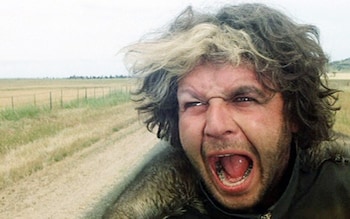 Hugh Case-Byrne as Toecutter in the film «Mad Max» Photo: Alamy
Hugh Case-Byrne as Toecutter in the film «Mad Max» Photo: Alamy
Production was so cash-strapped that instead of transporting motorcycles from Sydney to Melbourne, the punk actors rode bikes between cities — the entire 440 miles. They recalled feeling real “hate” from the locals as they visited different towns along the way—much like the movie—and got so into character that they acted like a real gang behind the scenes. They taunted the bronze actors and wrote threatening notes to Mel Gibson in blood (real blood or fake blood, depending on who's telling the story). When the noise barriers were removed from the exhaust pipes, a convoy of bicycles could be heard roaring through Melbourne.
The production was thrown into chaos after just four days when stunt coordinator Grant Page and actress Rosie Bailey, who originally played the role of Max's wife, were injured in a motorcycle accident. Bailey broke her leg and it was replaced, and Grant Page left the hospital two days later: «With his jump, his cane, his nose taped up, broken ribs and blood,» actor David Bracks said in a 2015 documentary. , Max's Madness. Page directed the film's stunts from a wheelchair.
The real road warrior from the original film was George Miller. With little experience other than making a few short films, he was freed from his chains. He broke filmmaking rules and came into conflict with a team that had more formal experience in television dramas. “It wasn’t like photographing combat,” Miller said. “He was trying to put a camera in what was happening.”
The production also broke existing legal rules: art director John Dowding later admitted to stealing the props and returning them after they had been used. The film crew blocked the roads without permission: they simply jumped onto the road to slow down traffic and filmed the necessary footage. Melbourne police eventually became interested in the film and helped. Off-duty police blocked roads and escorted vehicles.
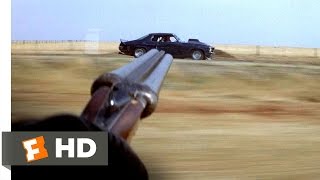
Miller wanted the action to look like a silent movie, but with sound. “I was especially struck by the films of Buster Keaton and Harold Lloyd,” Miller said. “And those very kinetic action montages that they did… I saw action films, especially vehicular ones, as an extension of that.”
Forty-five years later, Mad Max remains a strange and disarming experience: relentless car chases and stunning violence combined with comedy and curious interludes. The film is both technically propulsive and pure trash (in the exploitative sense, i.e. «Ozploitation» to be precise). All roads in Mad Max lead to unexpected places.
Driving his V8 Pursuit Special—a souped-up 1973 XB GT Ford Falcon Coupe (Max is still driving a version of the car by the time he turns into Tom Hardy in Fury Road)—Max takes out the gang and gives away the saw. — as punishment for Toecutter's protégé, the boy Johnny (Tim Burns). After chaining Johnny Boy's ankle to a car crash that's about to explode, Max gives him a choice: chop off his leg or burn to death.
«He's a guy who does exactly what he shouldn't do,» Tim Burns said in «The Madness of Max.» “That is, that he is a man who is given a moral choice, he becomes an insane killer. In this movie, the cop kills more people than anyone else.» Ultimately, Mad Max is a trip into degenerate morality. The viewer is firmly in the driver's seat of Max's revenge, a crusade of violence that is as disturbing as it is satisfying.
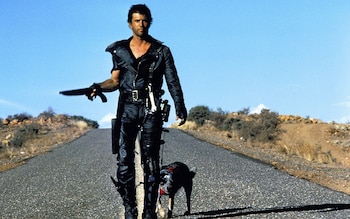 Mel Gibson in Mad Max 2 Photo: Alamy
Mel Gibson in Mad Max 2 Photo: Alamy
During filming, Mad Max spiraled out of Miller's control. Miller described it as a «horrible, bitter experience» and obsessed over every shot and mistake as he edited the film over the course of a year. “I felt completely defeated by the first Mad Max,” he told Australian Screen. “I felt that the film could not be released… it is a mystery to me why the film is still working.” Mad Max really worked. According to the Australian Film Commission, it grossed more money than all Australian films of the previous 50 years combined.
Miller recalled the phenomenon of his success: “I saw the film go around the world and become a hit in almost every culture except the United States [where it had limited distribution and was dubbed in American accents]. In Japan they called it a samurai film and said, “You must know Kurosawa.” I've never heard of Kurosawa. In France they said, “Oh, it’s a Western on wheels.” In Scandinavia they said, “He's a Viking”… I began to realize that somehow there was something else going on here, and it was the realization that the collective unconscious was going on. That there was a mythology and essentially Mad Max was sort of a weird Australian version.”
In the 1981 sequel Mad Max 2, called The Road Warrior in the United States, Miller and co-writer Terry Hayes stepped up the myth-making. Miller took inspiration from Joseph Campbell's The Hero with a Thousand Faces, an influential book about archetypal hero myths from around the world (the original Star Wars also drew heavily from Campbell's work).
In Mad Max 2, Rockatansky is a lone hero—a “hidden man,” as Mel Gibson said—in a world that has since become a full-blown, fuel-starved apocalyptic wasteland: a radical, creative wasteland. Transmission.
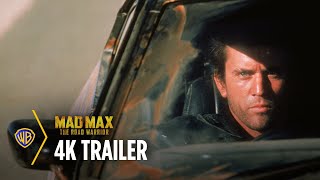
Terry Hayes was a former journalist and radio producer who joined the series after writing the novelization of the first film. Hayes, speaking via Zoom, recalls a radio program he created that was a fake report about an attack on a US oil tanker — a modern take on Orson Welles' scare-inducing adaptation of War of the Worlds. “By the second hour, the nuclear weapons were already being prepared,” Hayes recalls with a laugh of his version.
This naturally led to complaints — and ratings — but Hayes noted the nerve his show touched. “It was all about oil,” Hayes says. “If we said the world was going to end because of a virus, everyone would say, ‘What? Cold?!» says Hayes. “But we said that this was a battle for oil — everyone believed it. I thought it was powerful—a powerful thing that's hidden in a lot of people.»
This happened less than ten years after the 1973 oil crisis. “It was part of everyone’s consciousness,” Hayes says. Thus, Guzzolin's unquenchable thirst became the narrative driving force of Mad Max 2. Setting the story after the apocalypse—with a budget of $4.5 million, more than ten times the budget of the original—allowed George Miller to fully bring his vision to life. Hayes credits costume designer Norma Morisot and art director Graham «Grace» Walker for creating a post-apocalyptic style — a kind of industrial futurism in a junkyard, where everything is collected from the remains of an extinct civilization.
“The way the costumes were created for The Road Warrior was completely out of the ordinary,” says Hayes. “And Graham “Grace” Walker gave the cars the look of a fever dream. Apparently this circus has a ringmaster. That ringmaster was George.
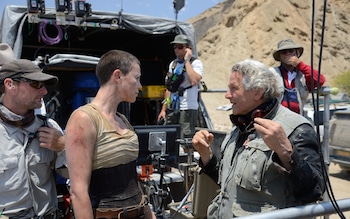 George Miller with Charlize Theron on the set of the film «Fury Road»
George Miller with Charlize Theron on the set of the film «Fury Road»
The plot tells how Max comes to town and saves an oil refinery settlement from the fuel-hungry Lord Humungus (Kjell Nilsson) — looking like an S&M Jason Voorhees with a hockey mask and a barrel-shaped chest with a leather strap — and a band of crazy, barbaric marauders.
Max leads the settlers to an apocryphal paradise by hitching their fuel tanker to a Mack truck in a 20-minute chase. Watched now, it feels like a test drive of what Miller achieved with Fury Road, but it remains a powerful action film unlike anything seen in an action film up to that point.
Shot by Dean Semler in the outback mining town of Broken Hill, Mad Max 2 features more than 200 stunts. The behind-the-scenes documentary captured some of the stunts that went wrong, including the motorcycle crash of stuntman Guy Norris (who returned for Fury Road). Norris did not jump off the bike quickly enough and lost control in the air, breaking his hip. Following a previous accident, Norris had a metal rod inserted into his leg and bent at a 20-degree angle. This stunt did become a finished film.
Hayes was present during the filming and personally witnessed the chase in Mack's truck. There was never a massacre for the sake of massacre. “We knew the storytelling had to be strong,” he says. «It was never, 'let's just throw a lot of cars at each other and see what happens.' George doesn't work like that at all. It was a very choreographed job.”
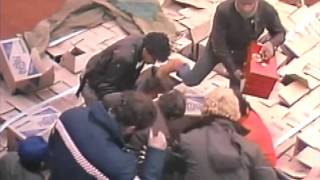
The chase comes to an abrupt end when the truck and tanker collide head-on with Lord Humungus' six-wheeler and then roll down an embankment. Even the stuntmen didn't want to do the truck roll. “We didn’t have much experience re-rolling a tanker,” Hayes says. “Stuntmen wouldn’t do that. They thought it was too dangerous. They couldn't foresee what would happen. This could have ended in real tragedy.»
Dennis Williams, a truck driver working on the transport crew, stepped up to the plate. “Dennis said, ‘I can flip this tanker,’ and we agreed!” says Hayes. Watching the stunt was a “harrowing experience,” Hayes recalls. Luckily, Williams was unharmed.
“We were young then,” says Hayes. “I’m not sure I could have been involved in something like that at that age. I'm not sure my heart can handle this. I remember watching it and thinking, “Oh my God, this could be really, really terrible.” But that's not true. Denis did an excellent job. For me, he is one of the heroes of the film.»
Miller said that in Mad Max 2 he «faced his failure» in the first film. This is certainly the rare sequel that surpasses the original — a huge step forward in vision, world-building and budget — and one of the best action films ever made. It's also a distinctly, brilliantly Australian film, with Neighbors-level acting and a wild child with a razor-sharp boomerang.
At the time, Mad Max 2 was the most expensive Australian film ever made and the highest-grossing Australian film of all time worldwide (Crocodile Dundee was still five years away from showing the world what a real knife looks like men, and collected mega-box office receipts). ). Mad Max 2 was a landmark moment for the Australian film industry — the country's first true blockbuster.
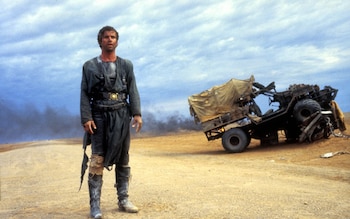 Mel Gibson in » «Beyond Thunderdome» Photo: Alamy
Mel Gibson in » «Beyond Thunderdome» Photo: Alamy
“Looking back, I think it’s true,” Hayes says. “But it didn’t feel like it at the time. There was a fair amount of jealousy in the Australian film industry. Not about Road Warrior — not about anyone! «Road Warrior was about the struggle for resources, just like the Australian film industry.»
Miller described how he always thinks the series is over when he finishes a Mad Max movie, but he always gets sucked into a new story. This was the case in the 1985 threequel Mad Max Beyond Thunderdome.
Miller reluctantly agreed to the film. Byron Kennedy, his friend and producing partner, died during development in a helicopter crash. Miller asked theater director George Ogilvy to co-direct, although Hayes believes Beyond Thunderdome is still very much Miller's film. Speaking in 2015, Miller admitted he grieved during the filming of Beyond Thunderd and remembers little about filming it.
Talking to Australian Screen, Miller also said: «In some ways , of all the films, this is the one I like best… although most people will disagree with that.»
In the story, Max arrives in Bartertown — a fiefdom, oddly enough, run by Tina Turner — where Max fights a huge helmeted villain inside the eponymous Thunderdome. It's a gladiator fight to the death, with both men bouncing around on giant rubber bands. “Two in, one out!” — the audience shouted — a phrase that became well-known among the crew.
Max later discovers a tribe of feral children and leads them to a new future through another (albeit less violent) desert chase. Beyond Thunderdome is Mad Max at his most mythical. The film has been compared to biblical stories and even Lawrence of Arabia. It has a softer soul and feels like a step into more mainstream territory — toned down and hopeful — with Tina Turner singing the accompanying theme song and Mel Gibson on the cusp of becoming one of the biggest movie stars in the world. Gibson even sports the variety of mullet that often graced his heyday—somewhere on the mullet scale between Lethal Weapon's Riggs and Braveheart.
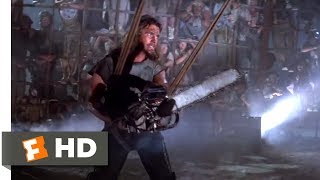
And like Gibson's hair, the song is pure 1980s nonsense — We Don't Need Another Hero (Thunderdome), a UK No. 3 hit — but Turner is resplendent in her chainmail stockings and suspenders. “I spent a lot of time sitting and talking with Tina and hearing about her past lives,” Hayes says. “About the time when she was an Egyptian princess. She was a very interesting woman, a very kind soul.”
Was Mad Max deliberately toned down for a more mass market? “If I subconsciously think that this happened,” Hayes says. “I think Thunderdome is full of great ideas, but it lacks the narrative drive of The Road Warrior. I'll probably have to take more responsibility for this than anyone else.»
The film caused great excitement in Australia, which had the biggest opening week in Australian film history. Australian newspapers boasted that Mad Max had beaten American hero Rambo at the US box office. The initial US box office boom died down and, with a larger budget of $10 million, the film was less successful overall.
Beyond Thunderdome seemed to be Max Rockatansky's final adventure—at least until the character returned in Mad Max: Fury Road 30 years later. «It's not that somebody said let's not make another Mad Max,» Hayes says. “It’s just that no one said, let’s do it!”
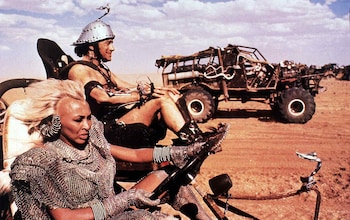 Tina Turner in the movie “Beyond Thunder” Photo: United Archives GmbH/Alamy Stock Photo
Tina Turner in the movie “Beyond Thunder” Photo: United Archives GmbH/Alamy Stock Photo
Hayes wrote the script for the psychological thriller Dead Calm, starring Nicole Kidman, as well as the Mel Gibson revenge action film Reckoning and the Jack the Ripper comic book adaptation From Hell. Hayes now writes novels, having become disillusioned with screenwriting in Hollywood. «I once told my wife, 'I'm sick and tired of trying to write good movie scripts.' You won't be able to take them off! It's a very unpleasant place to work.»
His debut novel, the spy thriller I Am Pilgrim, was published in 2013. His next novel, Year of the Locust, published in paperback June 6, tells the story of a CIA agent. an operative sent to the Afghan border, where he faces off against a mysterious villain known as the Locust.
“You have to see what's new, what's the next challenge,” Hayes says of his creative endeavor. His words also ring true in relation to the Mad Max series and Max's 40+ years of survival. “It’s a journey,” Hayes says. “If you are involved in any creative endeavor, you die when you stand still. You have to keep going.”
The Year of the Locust by Terry Hayes is published in paperback June 6.


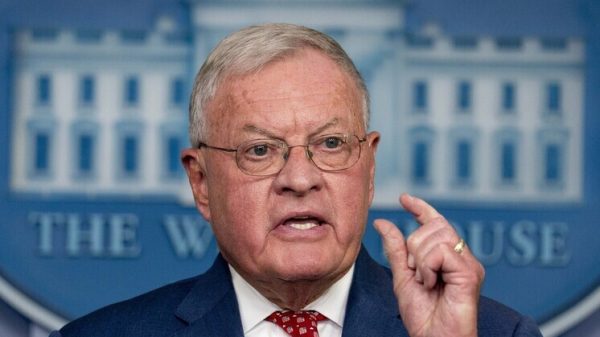




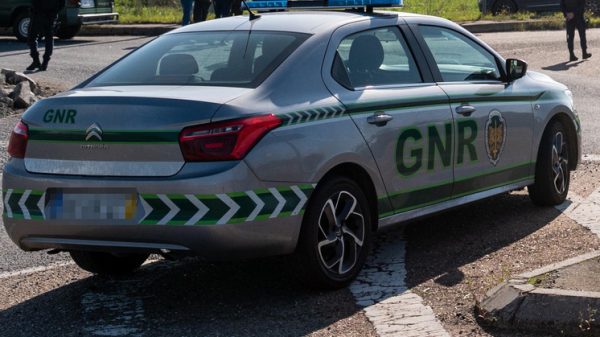

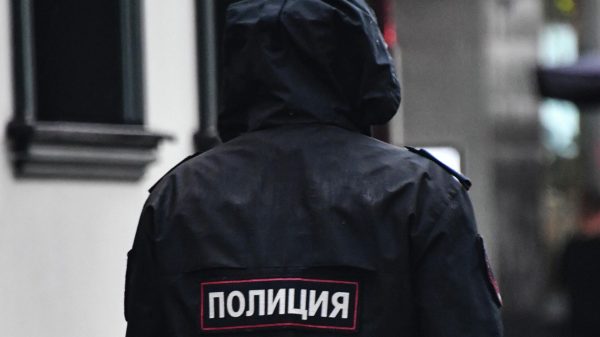


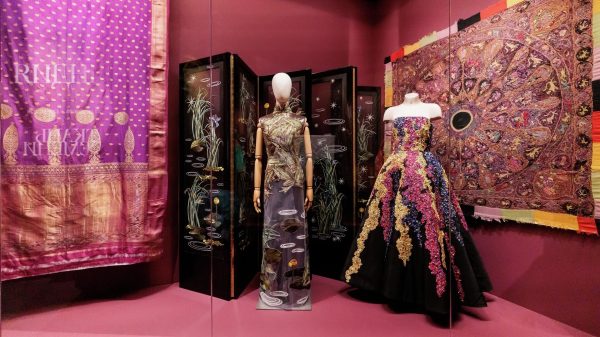


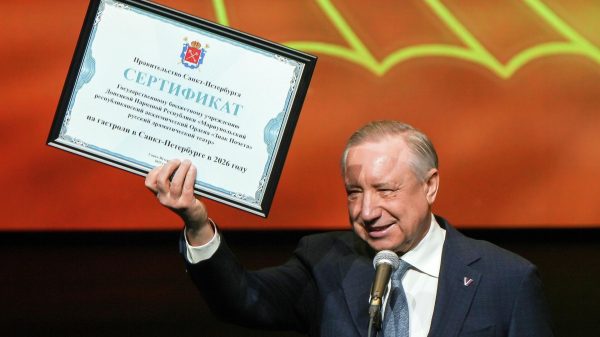





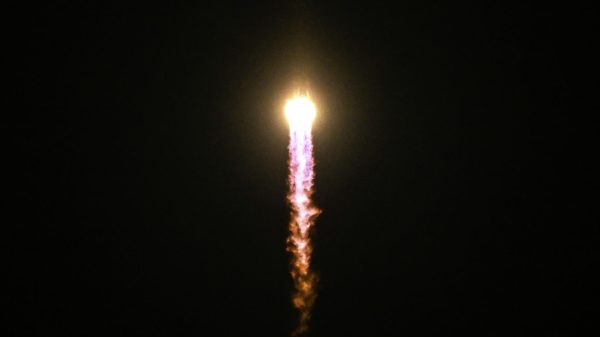































Свежие комментарии